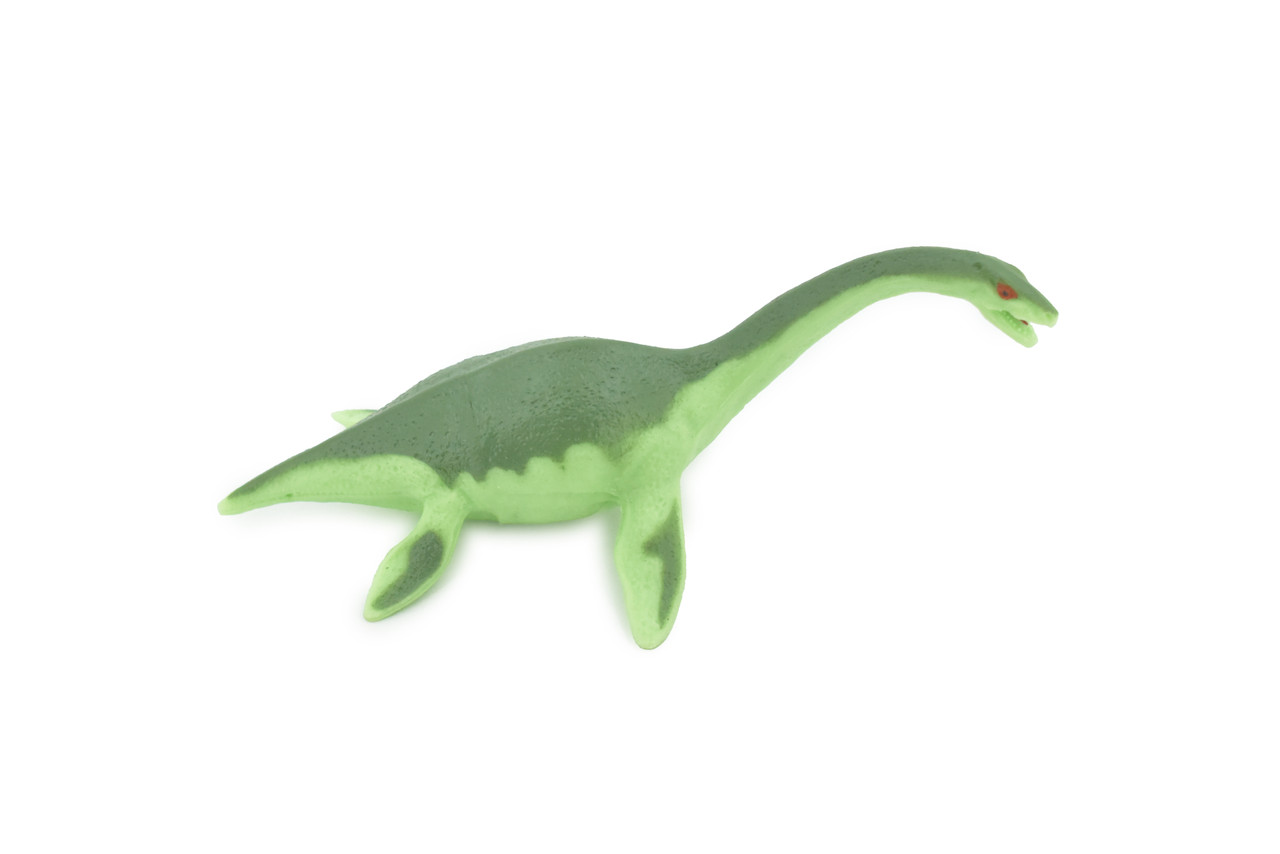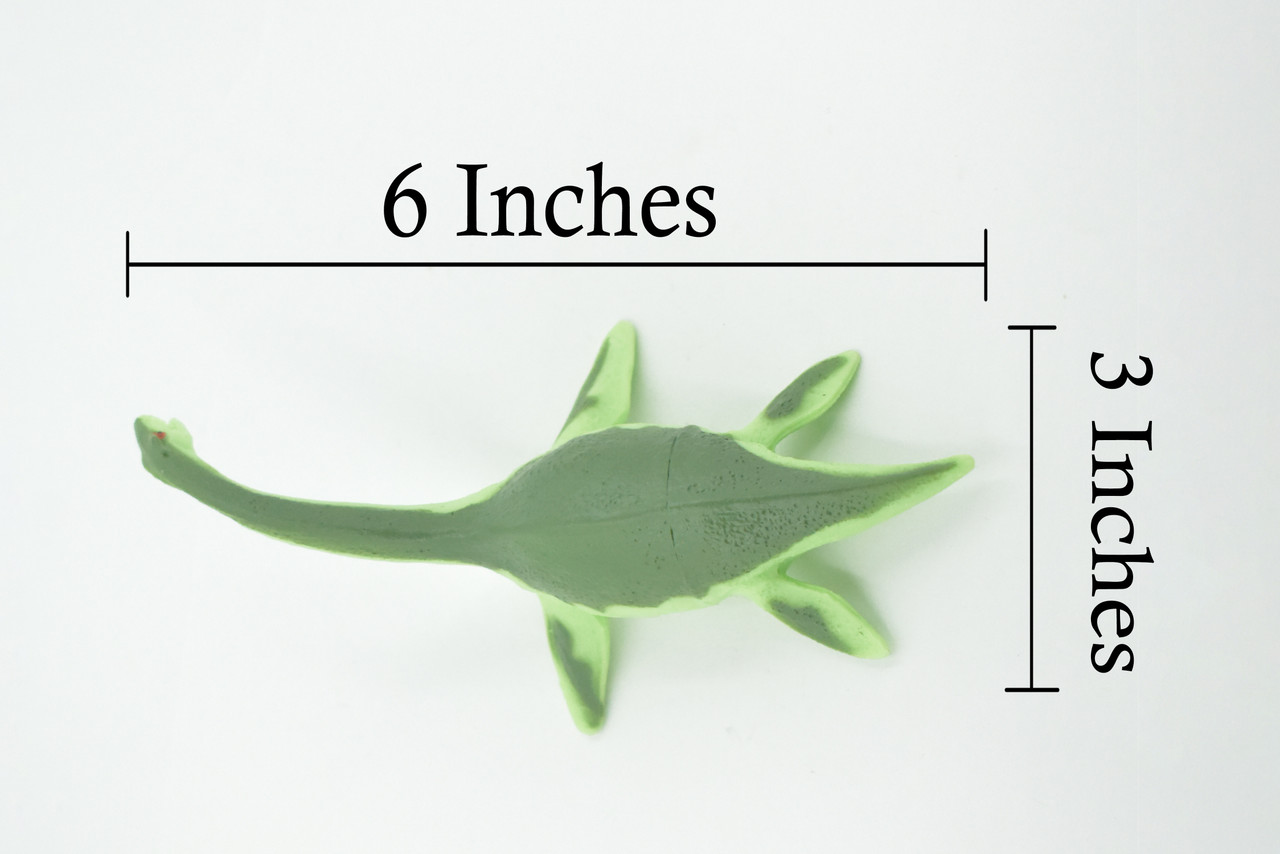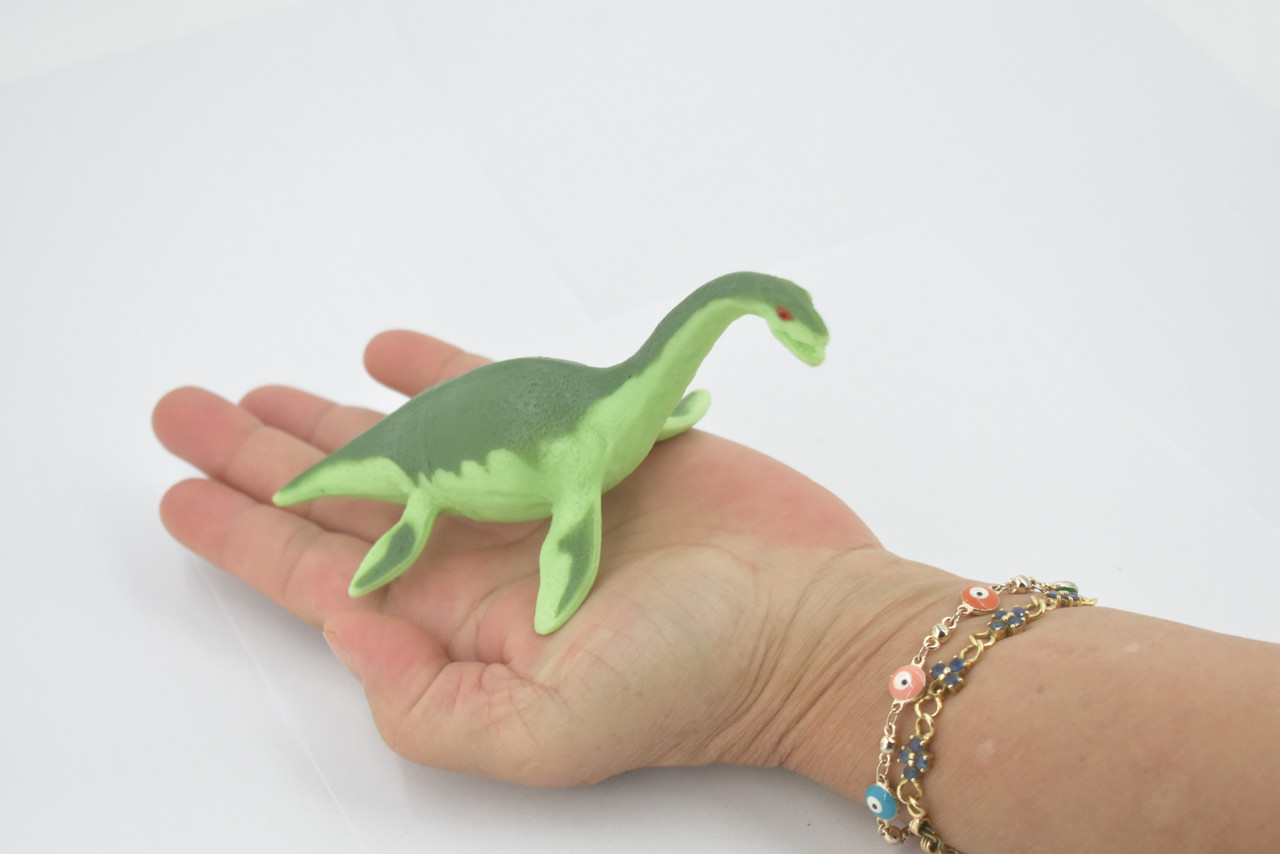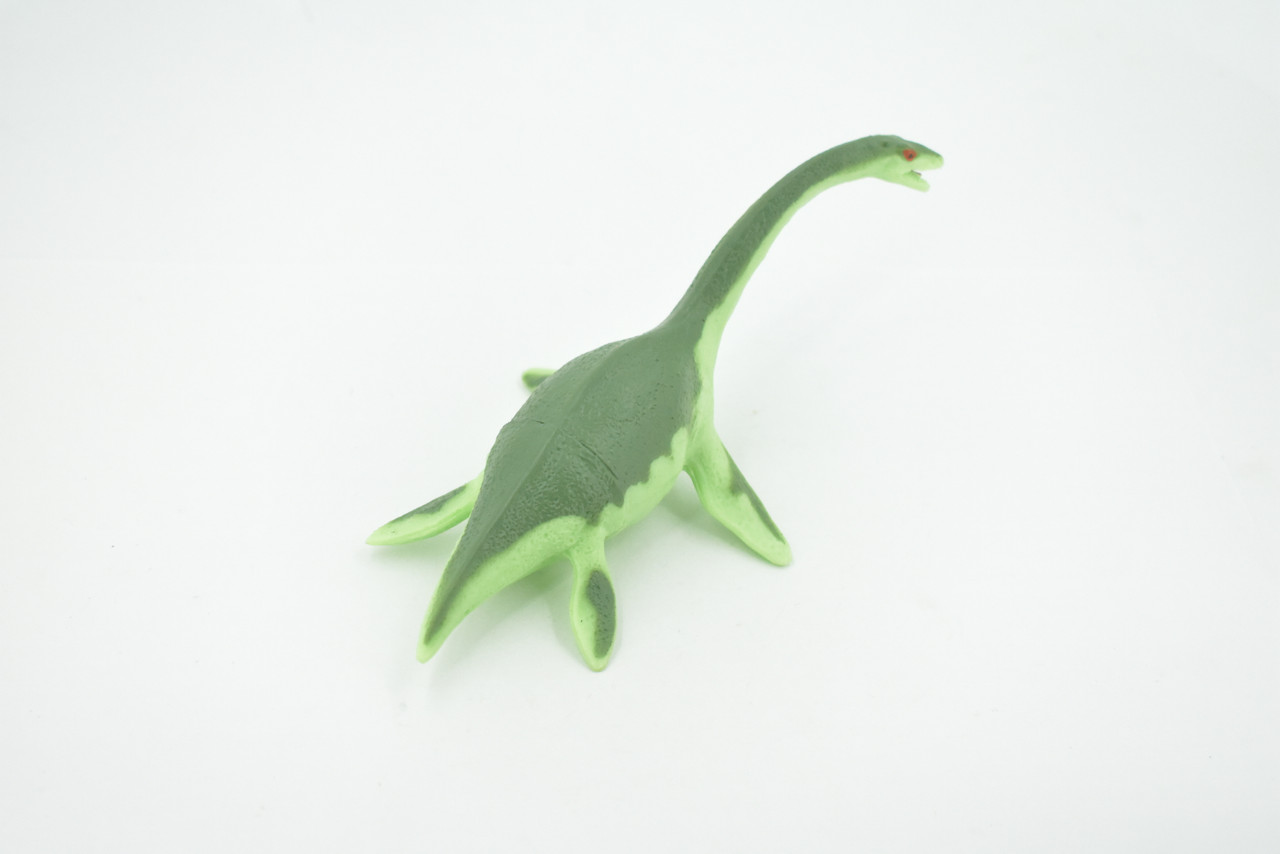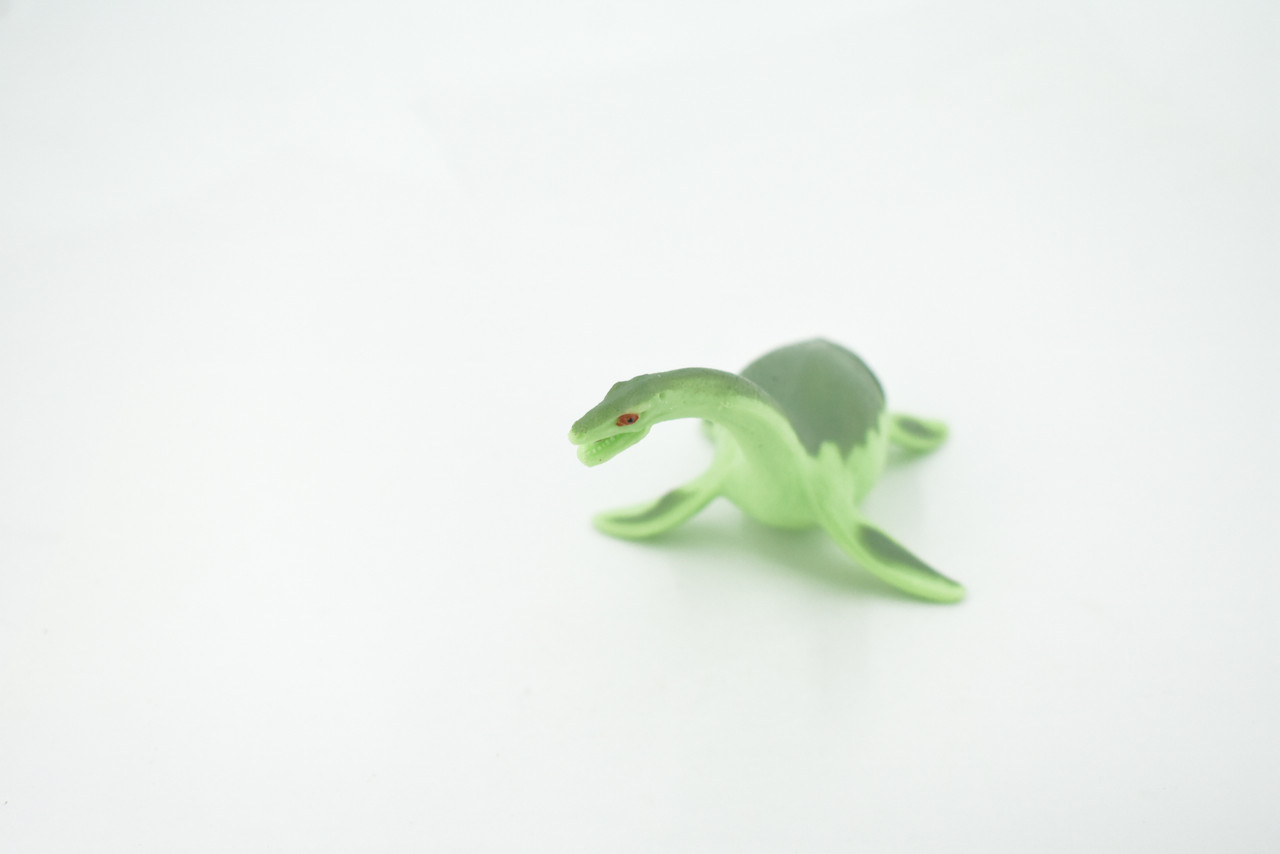Product Description
This Elasmosaurus, 6" figure includes hand painted features to give it realistic details that are true to natural anatomy. This figure is considered a high-quality replica. Highest Quality Natural Rubber.
Elasmosaurus Platyurus or Elasmosaurus was an extinct genus of Mesozoic marine reptiles. The precise definition of its name is “flat-tailed,” whereas the generic version is “thin-plate reptile.” Elasmosaurus aquatic reptiles were fossilized between 215 and 66 million years ago, during the late Triassic and late Cretaceous periods. This group is well-known for possessing especially long necks, which are substantially longer, and overall bigger than those of the more common plesiosaurs. These lengthy necks are made up of several cervical vertebrae, including 71 in the Elasmosaurus. They Were approximately 30–34 feet in length, with a wide, flattened body and a comparatively short tail. It swam by flailing its flippers in the water in a rudimentary kind of underwater “flying,” similar to how sea lions do now. Mostly on the rear of the head, close to the eyes, were the nostrils. Elasmosaurus was an apex predator and a carnivore. While they also ingested cephalopods, which are linked to modern squids and octopuses, it appears that fish made up a large portion of their diet. Despite being ambush predators, they glided and snatched their victim with their fang-like jaws. They may have eaten other marine invertebrates, and their usage of gastroliths likely helped them digest what they ate. Elasmosaurus’s long neck was essential to its eating strategy. It would only be necessary for Elasmosaurus to float up to a school of fish, probably from underneath, so that it could conceal its bulk in the darker shade waters and then use its neck to lunge its head in and pull out a load of fish. Prey that was approaching from below, such as a school of fish, would similarly silhouette against the brighter surface water, rendering them simpler to distinguish and do away with their defense mechanism of light reflecting off of their shining scales. The most likely place for Elasmosaurus to have existed was in the center of North America, which once held an old ocean that has now dried up. The ocean, which was shallow but nevertheless capable of covering a large portion of North America during the Cretaceous era, had once been located in the Midwest, where Kansas is currently located, close to the Western Interior Seaway.
Thanks for visiting Collectible Wildlife Gifts, the leading provider of high-quality, lifelike animal Designs and gifts! We work hard to ensure we have a diverse range of products. Each product is inspected for their quality craftsmanship. Whether you're searching for a great gift or seeking educational designs for displays, we’ve got you covered.
At Collectible Wildlife Gifts, our products appeal to a wide range of customers, including family, friends, and educators. Our products are trusted and used by professional organizations as well including aquariums, zoos, and movie studios.
Our extensive line of products boasts everything from plush sharks to educational animal growth cycles. Our products bring joy to recipients, and serve as valuable educational resources, sparking curiosity and fostering learning.
Discover the wonders of the natural world with Collectible Wildlife Gifts. Browse our collection today!

